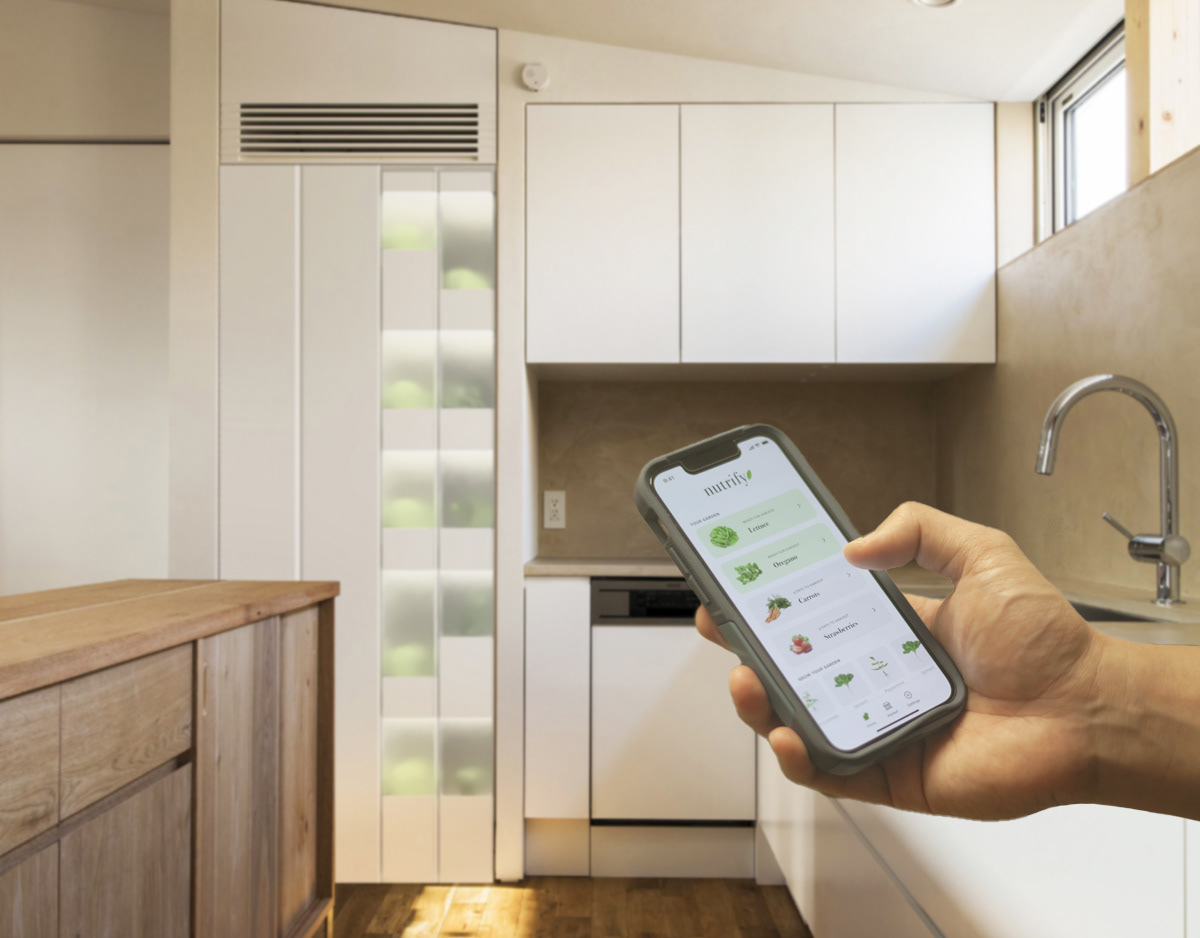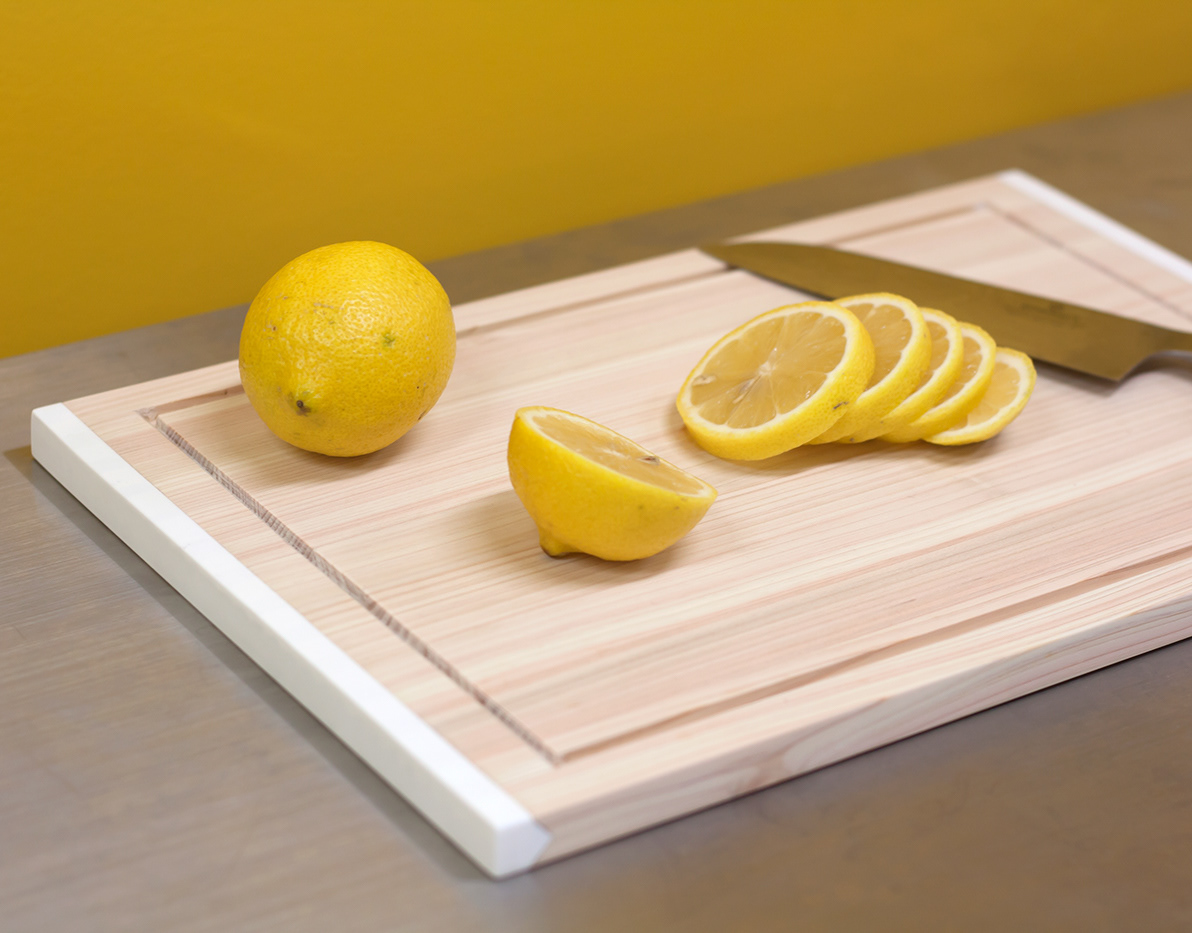Design FOCUS
ERGONOMICS + INTUITIVE DESIGN
nami is an affordable, ergonomic chef's knife that enhances the safety of the kitchen by reducing the ubiquitous risk of cuts sustained while preparing food. nami incorporates an ergonomic knife and automated blade maintenance.
As an avid home cook and baker, I enjoy my time in the kitchen - most of the time, anyway. One exception is the numerous cut and burn injuries I've sustained throughout my cooking life. I found that many people have the same problem, so I wanted to try my hand at creating a product that could help reduce the number of cooking injuries for home cooks. What I really wanted to do was make something that could improve people's cooking safety without them even realizing it, and certainly without them having to learn a new skill, pay extra attention, or change their habits (knowing that most users wouldn't go through the trouble).
RESEARCH findings
Pinch grip and regular sharpening reduce injury
After researching statistics about the biggest causes of injury in the kitchen, I decided to focus my design on preventing accidental cuts from kitchen knives. By researching online cooking websites and forums, talking to professional chefs, and surveying home cooks, I learned more about the causes of blade-related cooking injuries. Two often recommended approaches to avoiding accidental cuts were using a special grip called pinch grip, offering enhanced control, and maintaining the blade by honing and sharpening regularly. However, most home users do not use these techniques due to a lack of formal training.
DESIGN IDEA
Intuitive pinch grip
I decided to design a product that would make using pinch grip intuitive and natural, even without formal training. In addition, I wanted to come up with a way to make maintaining the blade effortless.
PROTOTYPING
Finding the average pinch grip
I took clay molds of various users using pinch grip. These molds gave me an idea of what an ergonomic, pinch-grip inducing knife handle would look like. I used the resulting form as the basis of my design.
USER TESTING
Using the composite image from the clay impressions as a starting point, I created foam models to conduct user testing. Using feedback from the user testing, I made modifications and arrived at the final form.

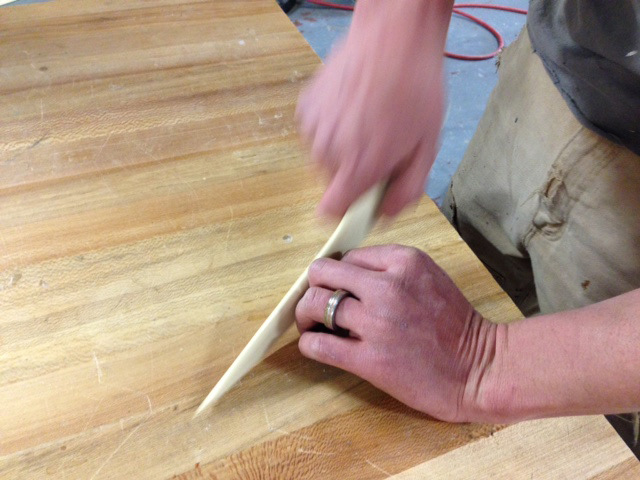
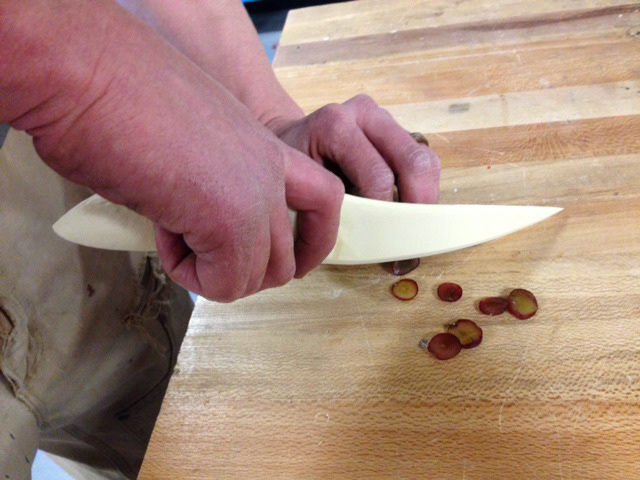

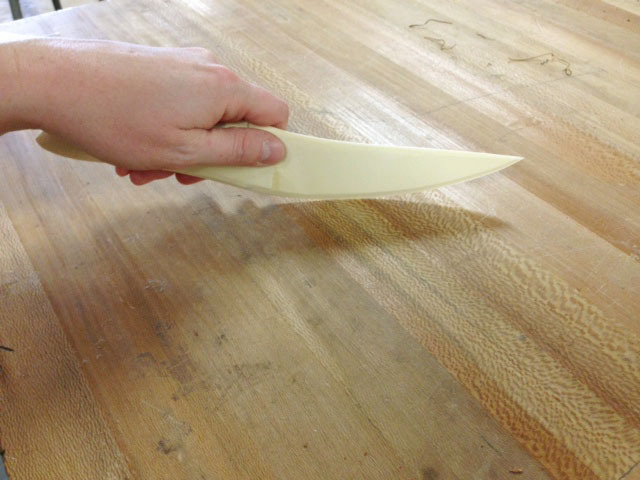
STYLING
Finding an elegant form based on the functionality of the knife
IDEATION
Envisioning a seamless maintenance routine to ensure a sharp blade
SOLUTION
An ergonomic kitchen knife with automated blade maintenance
